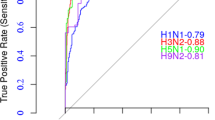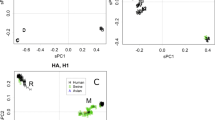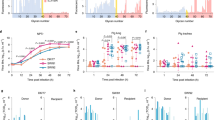Abstract
INFLUENZA A viruses causing natural infections in man, swine, horses and birds are indistinguishable from one another in the antigenic structure of their internal ribonucleoprotein (S or G antigen) but little or no relationship has been found between the human and animal strains which have been compared so far with respect to antigens present in the viral envelope (V antigens). This is not invariably the case, however, and V antigens common to certain strains of avian and mammalian origins have been observed (ref. 1 and B. Tumova and H. G. Pereira, to be published).
This is a preview of subscription content, access via your institution
Access options
Subscribe to this journal
Receive 51 print issues and online access
$199.00 per year
only $3.90 per issue
Buy this article
- Purchase on Springer Link
- Instant access to full article PDF
Prices may be subject to local taxes which are calculated during checkout
Similar content being viewed by others
References
Lief, F. S., and Cohen, D., Amer. J. Epidemiol., 82, 225 (1965).
Pereira, H. G., Tumova, B., and Law, V. G., Bull. Wld. Hlth. Org., 32, 855 (1965).
Pereira, H. G., Lang, G., Olesiuk, O. M., Snoeyenbos, G. H., Roberts, D. H., and Easterday, B. C., Bull. Wld. Hlth. Org., 35, 799 (1966).
Lief, F. S., and Henle, W., Bull. Wld. Hlth. Org., 20, 411 (1959).
Author information
Authors and Affiliations
Rights and permissions
About this article
Cite this article
PEREIRA, H., TUMOVA, B. & WEBSTER, R. Antigenic Relationship between Influenza A Viruses of Human and Avian Origins. Nature 215, 982–983 (1967). https://doi.org/10.1038/215982a0
Received:
Issue Date:
DOI: https://doi.org/10.1038/215982a0
This article is cited by
-
The National Institute for Medical Research, Mill Hill
Archives of Virology (1995)
-
Neuraminidase in Avian Influenza A Virus antigenically related to that of Human A0 and A1 Subtypes
Nature (1969)
Comments
By submitting a comment you agree to abide by our Terms and Community Guidelines. If you find something abusive or that does not comply with our terms or guidelines please flag it as inappropriate.



